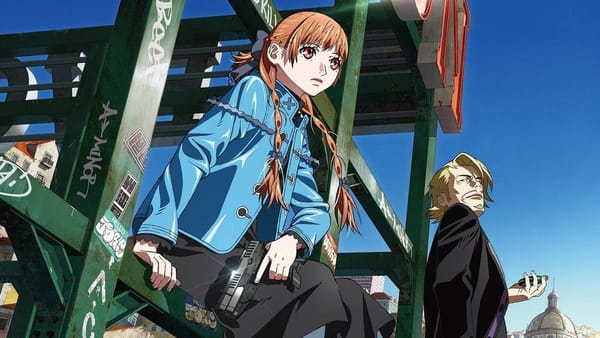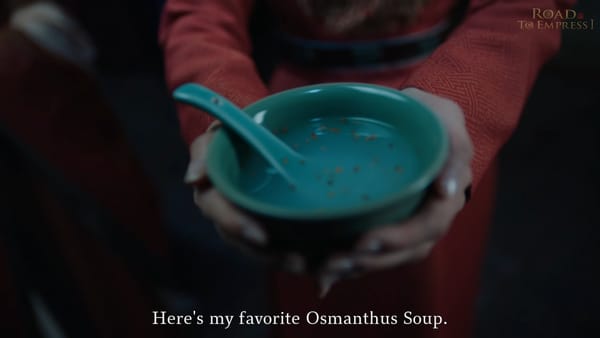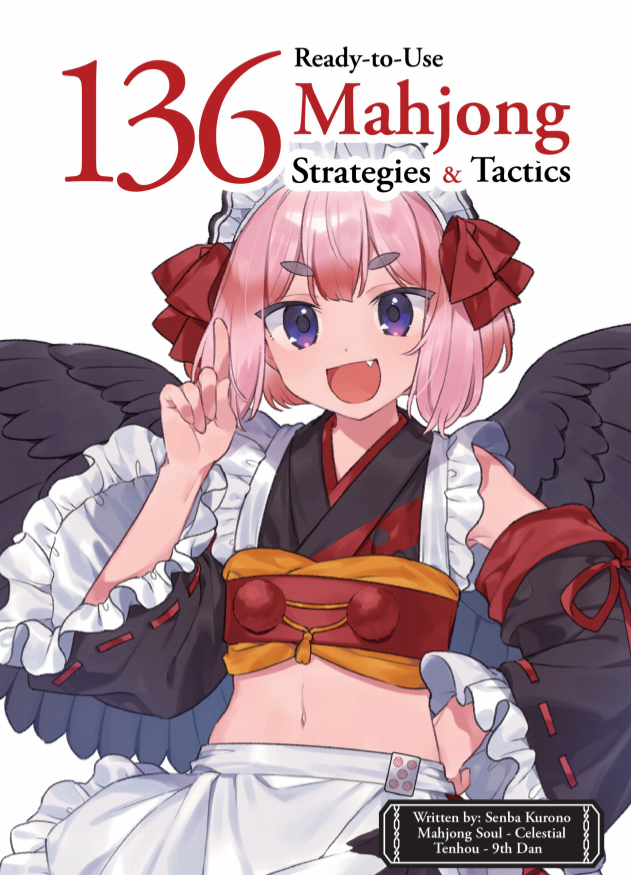If you absolutely won’t read manga or watch anime, the One Piece live-action is pretty good
Luffy is great! They pull off Arlong Park!
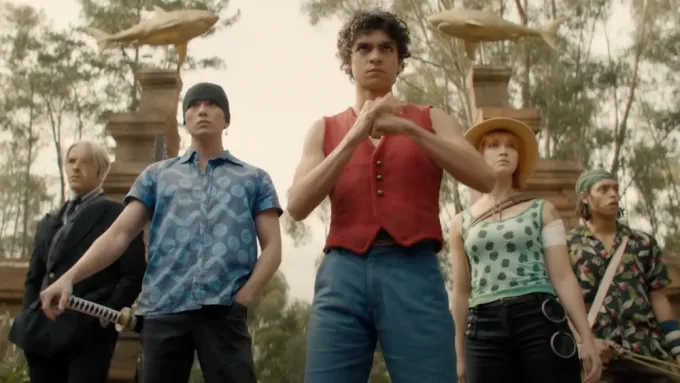
As a simple recommendation of product, you’d want to watch the live-action adaptation of Eiichiro Oda’s pirate epic One Piece in one of two situations:
- You are interested in One Piece, but for some reason would never read manga or watch anime (Netflix’s apparent key demographic with this project)
- You are interested in One Piece, but daunted by the massive length of the manga or time commitment of the anime and willing to make a compromise.
If you are not one of these people, I would tell you to instead go to the Shonen Jump website, sign up for three bucks and enjoy one of the greatest ongoing achievements in the history of comics. Then, once you are finished reading Akanebanashi, read One Piece.1
If you already know your One Piece, on the other hand, you’re probably just curious. Like, how, right? Well, everybody involved honestly did a pretty good job with live-action One Piece. It’s unreasonable to ask for much more: the material is called unfilmable for a reason. The series pares down a few of the earliest OP storylines into about eight hours of TV, skipping around, tying other parts closer together, and, notably, remaining extremely visually faithful to Eiichiro Oda’s anything-goes cartoon aesthetic in ways that most live-action adaptations would never dare.
It looks like One Piece
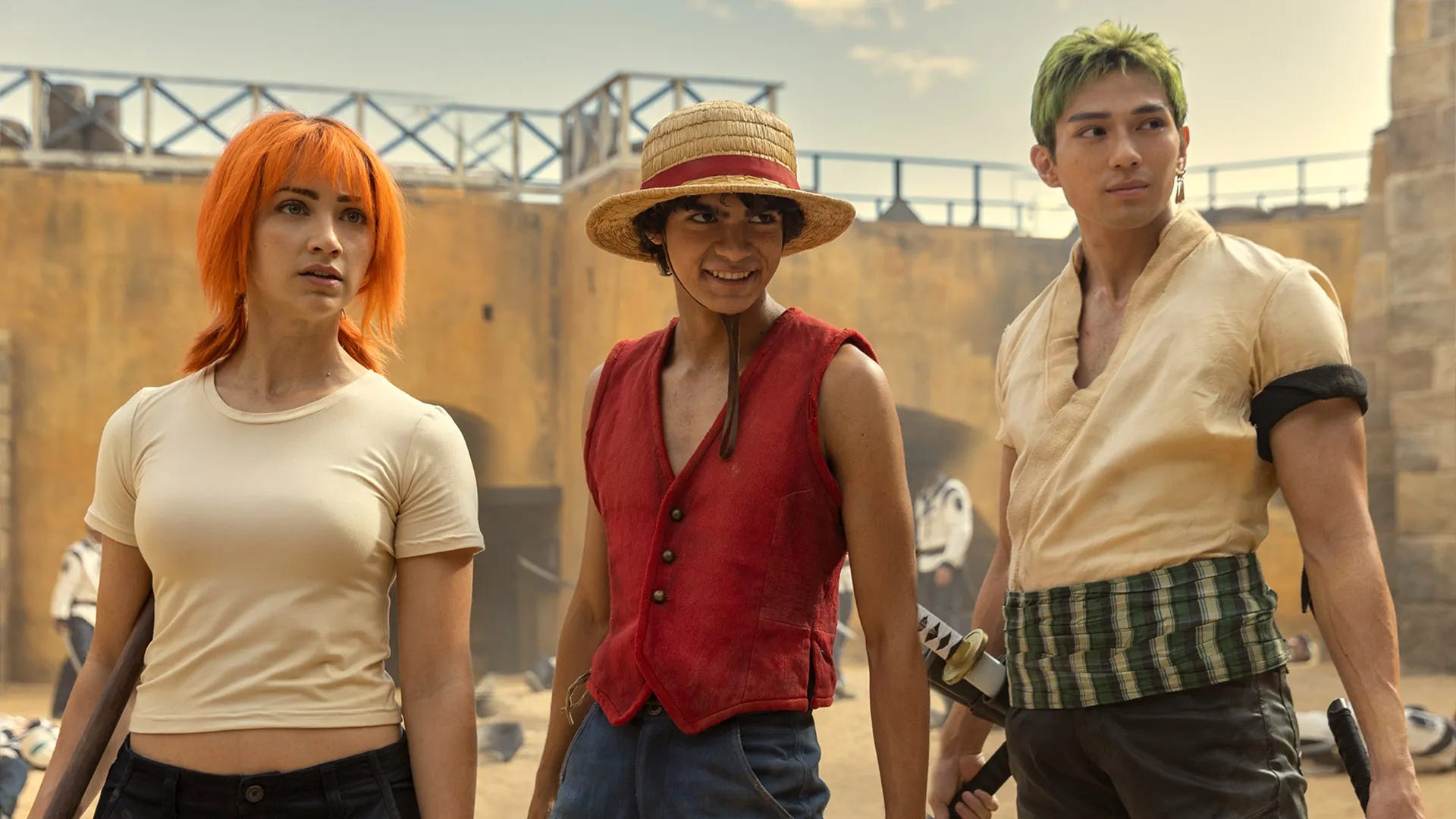
In fact, it’ll probably take a minute for your brain to get used to the visual style of this show, drawn as directly as it is from Oda’s art. My first impression from the opening moments was that I was watching the most expensive cosplay skit ever made. But that’s the world of One Piece: it’s big, it’s bright, and a lot of people have incredibly strange hairdos.2 Like live-action Battle Angel Alita’s huge anime eyes, it’s something you get used to.
The single person who does the most convincing job of selling this world is the lead actor Iñaki Godoy as our hero Luffy. In every sense, he’s a remarkable match for the carefree rubber-bodied captain. His infectious joy sets the tone, and his rubber powers set the baseline for the absurdity of the world. C’mon, just go with it!, his eyes tell us. The kid is great. Seeing him do his thing, I felt personally happy for him as a human being.
As the series goes on, the level of attention to detail becomes apparent with every location, background character, and change of clothes: the costume department seems intent on creating every outfit Oda ever drew on the main crew. Rather than shying away from the cartoony essence of this world, the creators lean all the way in. Far from looking like they’re slumming, actors lean into larger-than-life characters like Garp, Mihawk, and Kuro (doing his best “here’s Johnny!”), absolutely savoring the chance to give such over-the-top performances.
I respect that about this show a lot. It makes no excuses for One Piece.
It feels like a superhero movie
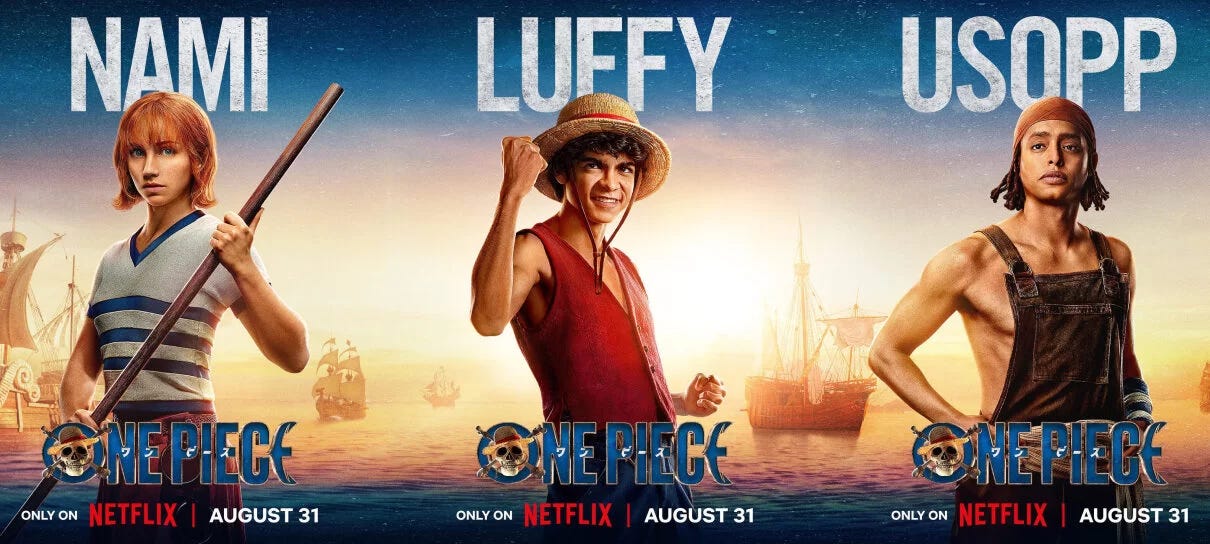
Inevitably, though, it does also feel like the series has been squeezed into the American superhero movie/TV mold. Considering Luffy’s heroic exploits, that isn’t much of a thematic stretch (haha), but the tonal difference is felt throughout.
One of the things I like about anime/manga, and indeed other Japanese media, is its earnestness with fantasy content. It’s just there, and nobody’s making apologies for it. The thing I hate about modern superhero movies is the constant self-deprecating wisecracking, the feeling that the people involved are ashamed of the material and thus must cut it down to maintain cool. The cool thing is the rubber man stretching his arms like a slingshot and headbutting the bad guy in the face.
Considering this studio made the unbearable Cowboy Bebop remake, I was really worried that live-action One Piece would constantly cut back to Nami or Zoro saying stuff like “uh, I guess we’re doing THAT now?” or “Hey Sanji, that kick was awesomesauce!”
Thankfully it’s not like that. Nami and Zoro, Miss Cynical and Mister Aloof respectively, do indeed ground the audience to Earth against Luffy’s wild optimism. But those characters were already like that, and the wisecracks in this show are reasonably spaced out. Nor is it far out of character for Zoro3 to grumble “fucking clown…” about Buggy.
On that note, I also really hate this new version of Buggy. The actor gives a great performance, no shade on him, but rewriting loser clown dork Buggy into a hot, charismatic cartoon-Heath-Ledger-Joker— and then making sure he never goes away— comes off as the creators hedging their bets by directly courting internet fandom. The producers of this show paid for an ad campaign that put images of Buggy onto Tumblr in an effort to astroturf him into a fangirl heartthrob4, so I’m totally right about this.
I don’t really mind “fanservice” as a concept5, but this kind of cynical stuff really rubs me the wrong way. I mean, if you’ve really got something, fans will get horny for it on their own.
It’s compressed
I mean, of course it is, we’re talking about One Piece here. A lot of minor characters are cut for time. The show covers up to the Arlong Park story and ends right as the crew is about to hit the Grand Line, a reasonable amount to cover in a season. The fun part is that the writers have the benefit of hindsight on a 30-year-old section of One Piece, and they go ahead and tie things together as tightly as they possibly can.
There’s a feeling of not wanting to waste a character when they do appear; characters who barely appear in the source material like Koby and Garp have their roles expanded to major supporting characters. Dialogue even drops a few names of characters who couldn’t possibly appear even if this show went on for another ten seasons, like Jinbei.
It’s basically a linear progression, but character backstories— we absolutely can’t do without them— do get tied into stories as they progress in the Shonen Jump style. The production doesn’t skimp on these sequences: they know that the characters’ pasts are the emotional cores that we’ll carry with us for the rest of the show.
Some things just can’t translate
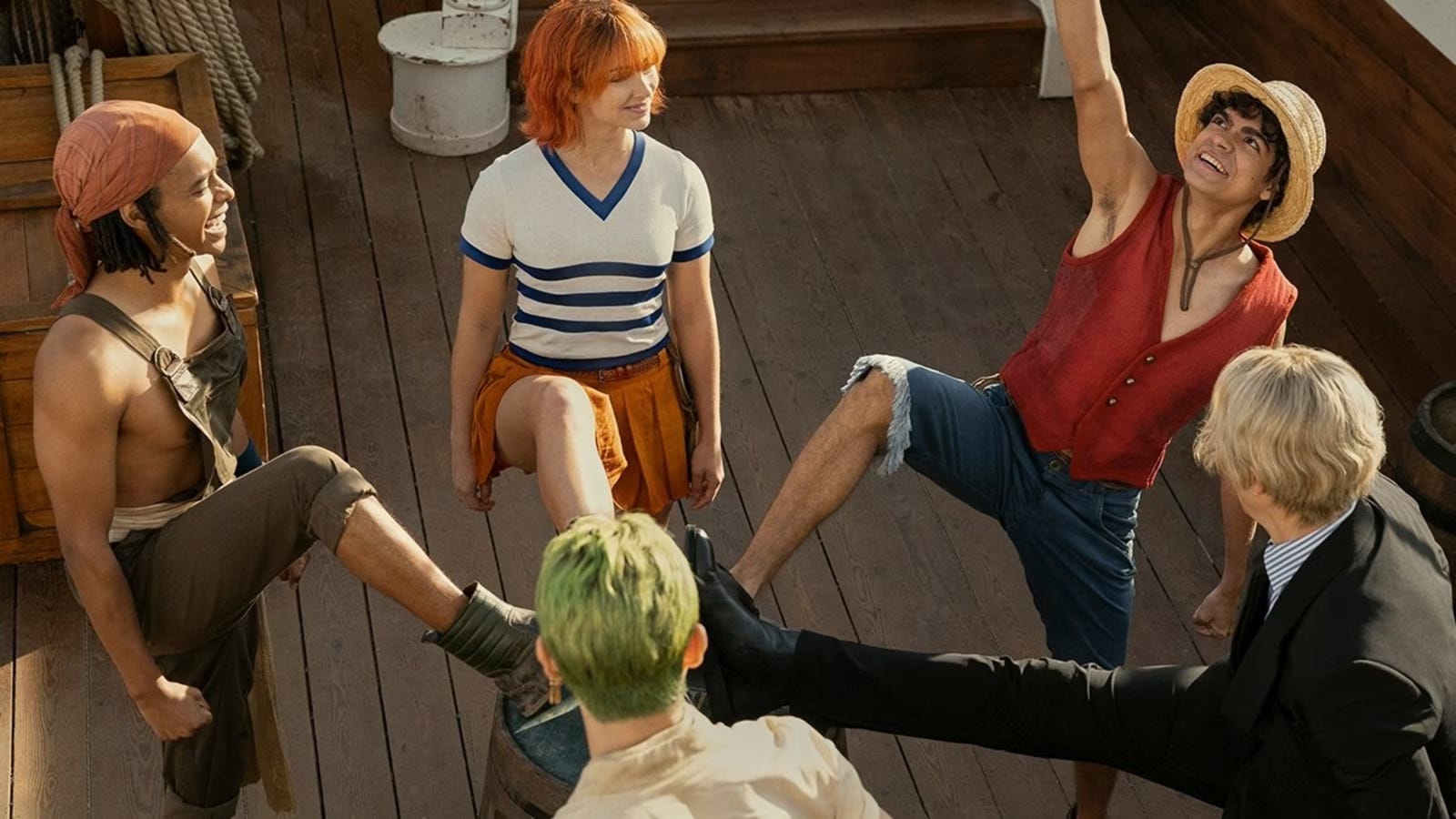
One of the bits I was looking forward to most in the show, once I got used to its rhythm, was the battle between Zoro and Dracule Mihawk. The upstart Zoro challenges legendary swordsman Mihawk to a duel to the death; the latter dispatches him with a miniature blade, but spares his life on account of his sheer warrior spirit. “Wounds on the back are the shame of a swordsman!” Oh man, oh man, it’s the good stuff. It’s the best. I get excited just thinking about it.
It doesn’t really work on the screen. It’s just an ordinary fight scene, with none of the drama of this moment. The melodrama of this scene, along with that supernatural passion and intensity, are tastes best savored in a cartoon world. It is not Mackenyu’s fault that the defeated Zoro’s cry, “I’ll never lose again!”, just doesn’t hit the same way6.
And when it comes down to it, that’s the reason I’d recommend you read the manga instead. The specific reason people love One Piece so much is its deep humanity and emotional strength, its incredible power to make you cry for the silliest people in the most ridiculous world. I don’t know if the same tears would have rolled down my face when Nami turned to Luffy and said “I need help”, if that moment had not triggered my memories of the comic panel the scene is shot after.
(By the same token, I found the story between Kaya and Usopp felt really strange as these grown adults act like sweet, innocent babies. It may be that the character of Kaya is just too innocent for me to believe on screen.)
But maybe…
Maybe you’ll watch the live-action and get into the manga or the anime; certainly there are a lot of people like that right now. Maybe the live action does work for you as it is: it’s the ultimate American localization, after all. Maybe you’re a fan who wants to see how they pulled off your favorite parts. I’m really not the person to ask, because I already know One Piece, at least a little bit: I knocked out about 400 chapters during COVID lockdown.
The live-action One Piece makes me wonder if that person is out there— the person who does not care about manga/anime but is nevertheless interested in an adventure tale about a stretchy man and his wacky friends— and further, what that person would even make of this world. I hope it shocks them a little bit, and I hope that’s why they end up liking it.
It’s actually all free on the website right now but that ruins my joke and I’ll be damned if I’m going to remove “read Akanebanashi” ↩
I’m not even talking about Nami or Zoro’s brightly dyed hair: I’m talking about the dude who’s got the head of a sheep. ↩
Zoro better get with it and start calling out his finishing moves ↩
The key criteria for a hit male character is actually that he be pathetic; keep it in mind ↩
I’d be remiss to mention there is the tiniest bit of “hey guys, check out Nami, Nami is hot”, but that’s the original work too ↩
It’s debated whether the CGI Luffy rubber stuff works. I think it looks good, and am not sure how else they could have possibly done a power like that in live action. ↩

